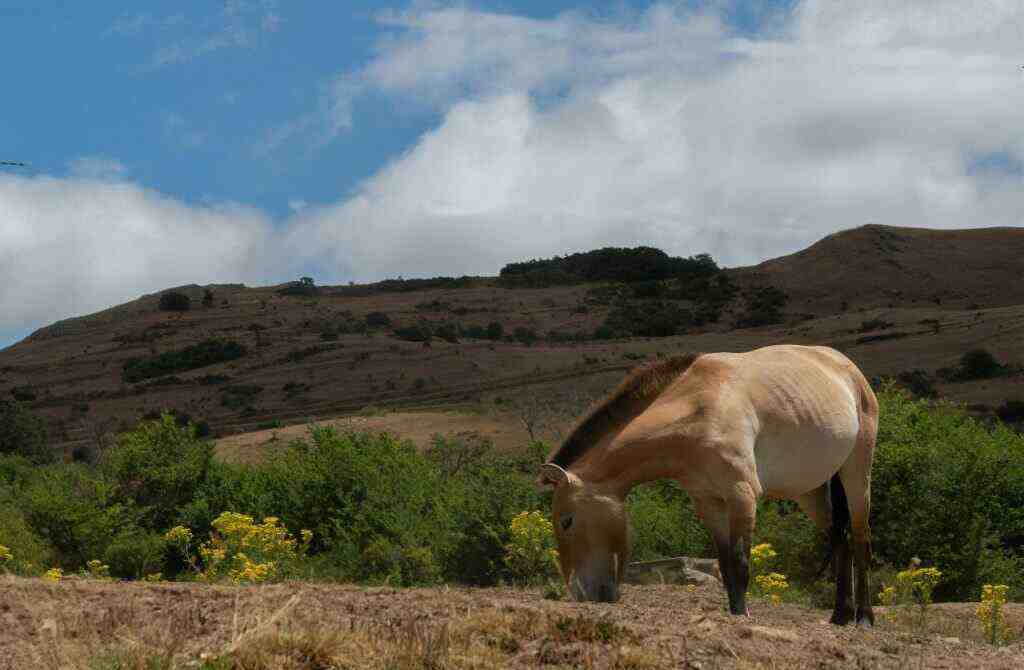Restoring the Genetic Legacy: Cloning Przewalski’s Horses for Conservation
A Journey from the Brink of Extinction
In the vast steppes of Central Asia, where winds whisper through tall grasses and herds of wild horses once roamed free, there lived a majestic creature known as the Przewalski’s horse. But as human footprints encroached upon their ancestral lands, these magnificent animals faced a relentless march towards extinction. By the late 19th century, the last truly wild Przewalski’s horse vanished from sight, leaving behind a legacy of resilience and a desperate need for conservation.
Captive Breeding: A Lifeline for a Vanishing Species
In response to the dwindling wild populations, conservationists embarked on a daring mission to preserve the genetic heritage of the Przewalski’s horse. In 1959, a formal breeding program was initiated, gathering a small group of these rare animals into captive populations. This lifeline provided a glimmer of hope, but challenges soon emerged. The limited genetic pool of the original captive population led to serious inbreeding issues, threatening the overall health and resilience of the species.
Reintroductions: Returning to Ancient Roaming Grounds
Despite the genetic challenges, conservationists remained steadfast in their efforts to restore the Przewalski’s horse to its rightful place in the wild. In 1992, a herd of these majestic creatures was released into Mongolia’s Hustai National Park, marking the beginning of a series of reintroductions aimed at establishing self-sustaining populations in their former ranges. Subsequent releases followed in China, Hungary, Kazakhstan, and Russia, each step forward bringing renewed hope for the survival of this critically endangered species.
Genetic Diversity: The Key to Long-Term Survival
The genetic diversity of the existing Przewalski’s horse population is paramount for its long-term survival. However, the limited genetic pool resulting from the original captive population and subsequent inbreeding has raised concerns about the species’ resilience and adaptability to changing environmental conditions. To address this challenge, conservationists turned to a groundbreaking technique: cloning.
Cloning: A New Chapter in Conservation
In 2018, the San Diego Zoo Wildlife Alliance, in collaboration with Revive & Restore and pet cloning company ViaGen Pets and Equine, embarked on an ambitious project to introduce much-needed genetic diversity into the existing population of Przewalski’s horses. This initiative involved the cloning of Przewalski’s horses using genetic material from a long-dead male named Kuporovic.
Kuporovic was selected as the cell donor due to his significant genetic distance from all other males in the Przewalski’s horse studbook. Although Kuporovic had some domestic horse ancestry, the lead author, Ben J. Novak, emphasized that this would have minimal impact on conservation efforts.
“Genetic ‘purity’ in the history of Przewalski’s horse conservation is an arbitrary construct influenced heavily by human culture and pseudoscience,” he explained. “Modern genomics has revealed that hybridization is very common in nature, and not only beneficial in many circumstances but also has played an essential role in the evolution of many species.”
The cloning procedure involved fusing cells from the donor horse with oocytes (ovarian cells) from domestic mares through an electrical pulse. This fusion initiated the development of an embryo, similar to the process of natural fertilization.
Ethical Considerations: Weighing the Risks and Benefits
The cloning of animals has raised ethical concerns, particularly regarding the potential health problems associated with cloned individuals. The famous cloned sheep, Dolly, lived only half the normal lifespan of a sheep. However, other cloned sheep have been observed to live normal lifespans, indicating that the frequency of negative effects due to cloning remains unclear.
Novak expressed confidence that cloned Przewalski’s horses would not experience any health issues different from naturally conceived individuals. He emphasized the importance of this breakthrough in addressing the genetic erosion caused by breeding from zoo populations, stating that it could “undo some of the genetic erosion” and enhance the species’ resilience.
Conclusion: A Hopeful Step Towards Restoration
The cloning of Przewalski’s horses represents a significant milestone in conservation science, offering new hope for the preservation and genetic diversity of this critically endangered species. By introducing much-needed genetic diversity, cloning can help mitigate the effects of inbreeding and increase the resilience of the population. While ethical considerations remain, the success of this cloning project paves the way for future conservation efforts aimed at restoring the genetic legacy of Przewalski’s horses and ensuring their long-term survival.
Call to Action: Join the Fight for Conservation
The journey to restore the Przewalski’s horse to its rightful place in the wild is an ongoing one, and every step forward relies on the support of passionate individuals like you. Join the fight for conservation by spreading awareness about this remarkable species, supporting organizations dedicated to their preservation, and advocating for policies that protect their natural habitats. Together, we can ensure that the Przewalski’s horse continues to gallop freely across the steppes of Central Asia for generations to come.
